In the center of the South American continent, south of the Amazon basin and east of the Andes, lies an immense landlocked river delta called Pantanal. It lies mostly within Western Brazil but extends into portions of Bolivia and Paraguay, covering an estimated 140,000 to 195,000 square kilometres. Between November and March annual floods, fed by tropical rains, inundate this region by up to several meters transforming Pantanal into the world’s largest freshwater wetland ecosystem, half the size of France. With a variety of ecological sub-regions, nursing hundreds of species of aquatic life, birds and other animals. Pantanal is one of Brazil's major tourist draws.
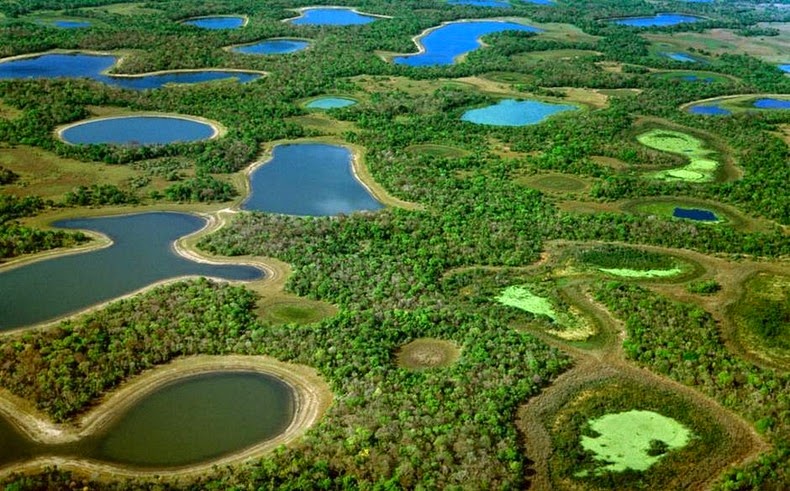
Pantanal lies in a huge, gently-sloped basin, bounded by higher lands on all side: the mountains of the Serra de Maracaju to the east, the Serra da Bodoquena to the south, the Paraguayan and Bolivian Chaco to the west and the Serra dos Parecis and Serra do São Geronimo to the north. During the wet season, rainwater flows from these highlands into the Pantanal, inundating much of the low-lying regions and creating small vegetation islands above the high-water level, called cordilheiras, where the animals cluster together.
The waters reach their high mark from 2 to 5m, in January or February, then start to recede in March. This seasonal flooding nourishes Pantanal, replenishing the soil’s nutrients, and providing an enormously rich feeding ground for wildlife. As the Pantanal drains, hundreds of fish species gets trapped in increasingly smaller ponds, lakes and channels. This attracts large number of birds who compete for fish in the remaining ponds. From July to December, an ever-growing numbers of animals gather around shrinking bodies of water to drink and feed on the huge quantities of trapped fish, producing a concentration of fauna seldom witnessed in the other parts of the world. Later in the dry season, when the lagoons and marshes dry out, fresh grasses emerge on the savanna.
Pantanal is at considerable risk from human activities including commercial fishing, farming, and cattle-ranching, and the pollution caused by these activities, not to mention hunting and poaching. A contributing risk factor in the Pantanal is the fact that there is very little formally protected area. There is only one small national park, Pantanal Matogrossense National Park, of about 1,350 square kilometres which represents less than two percentage of the total area of Pantanal. There is another 878 square kilometres Natural Heritage Reserve established in 1998.
Also see: The Impenetrable Wetlands of Sudd in South Sudan
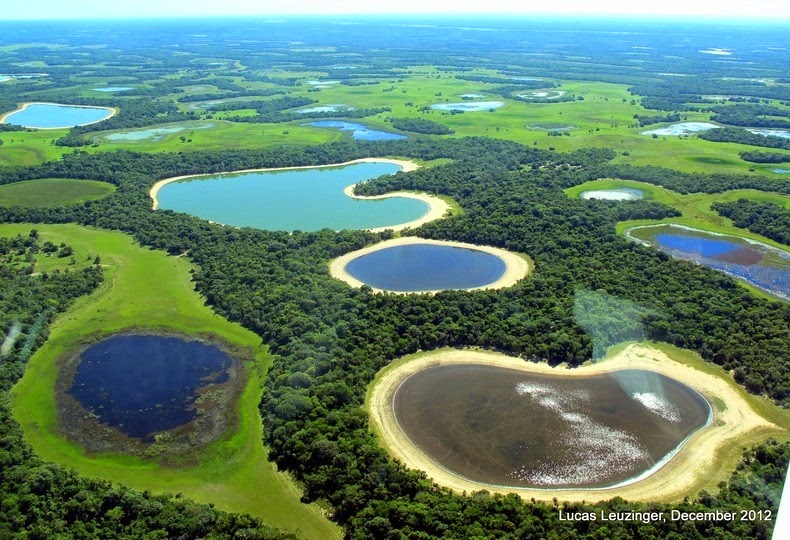
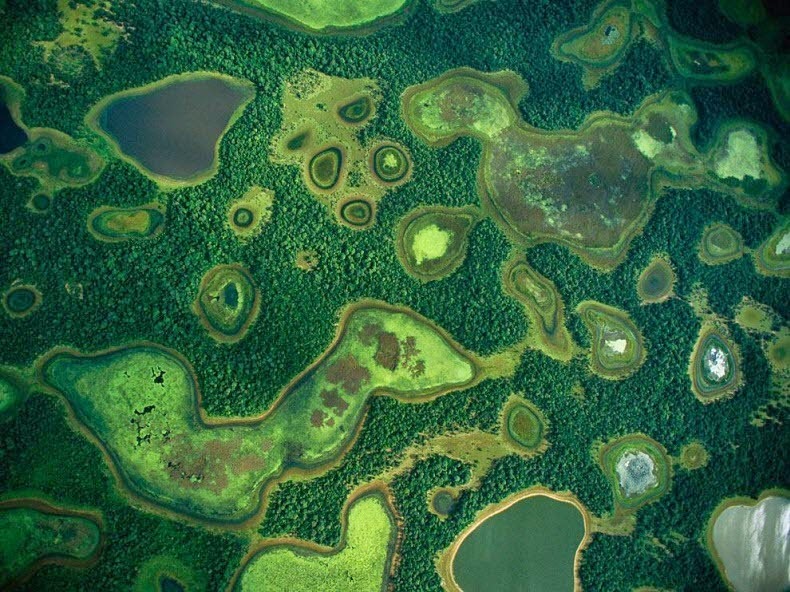
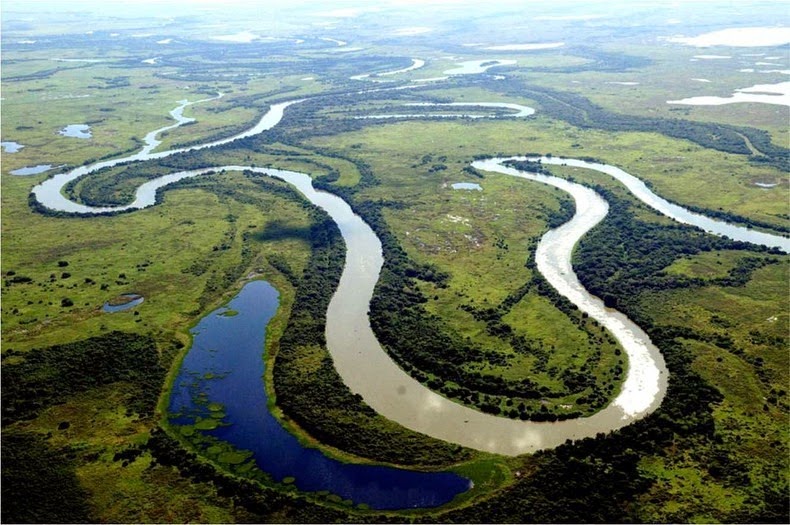
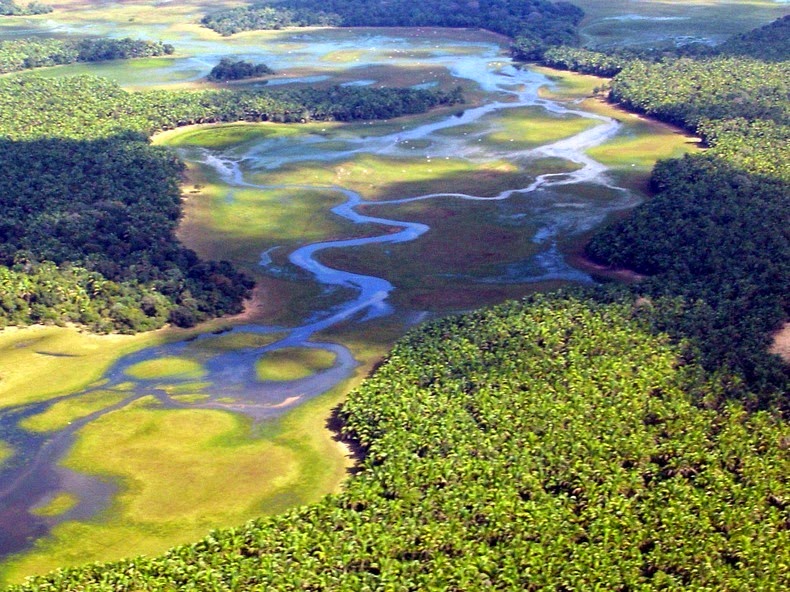

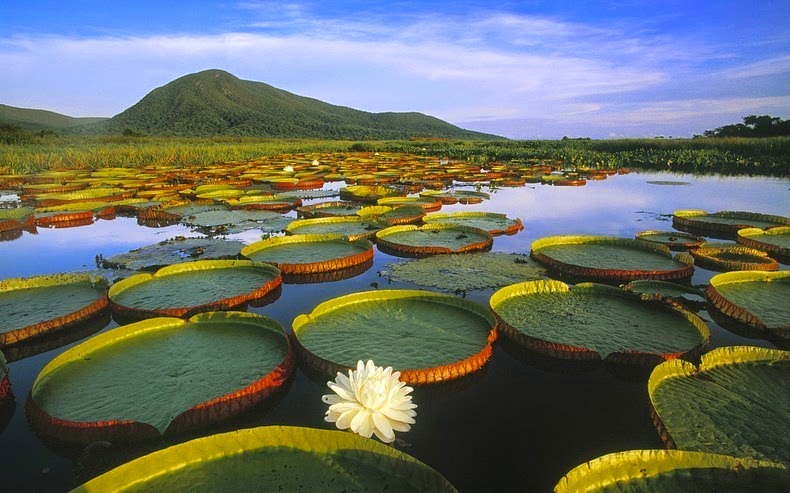
Sources: www.pantanal.org / Wikipedia / Lonely Planet



The last picture, does it really belong to the amazonas?
ReplyDeleteIt's not the Amazonas, it's Pantanal.
Delete